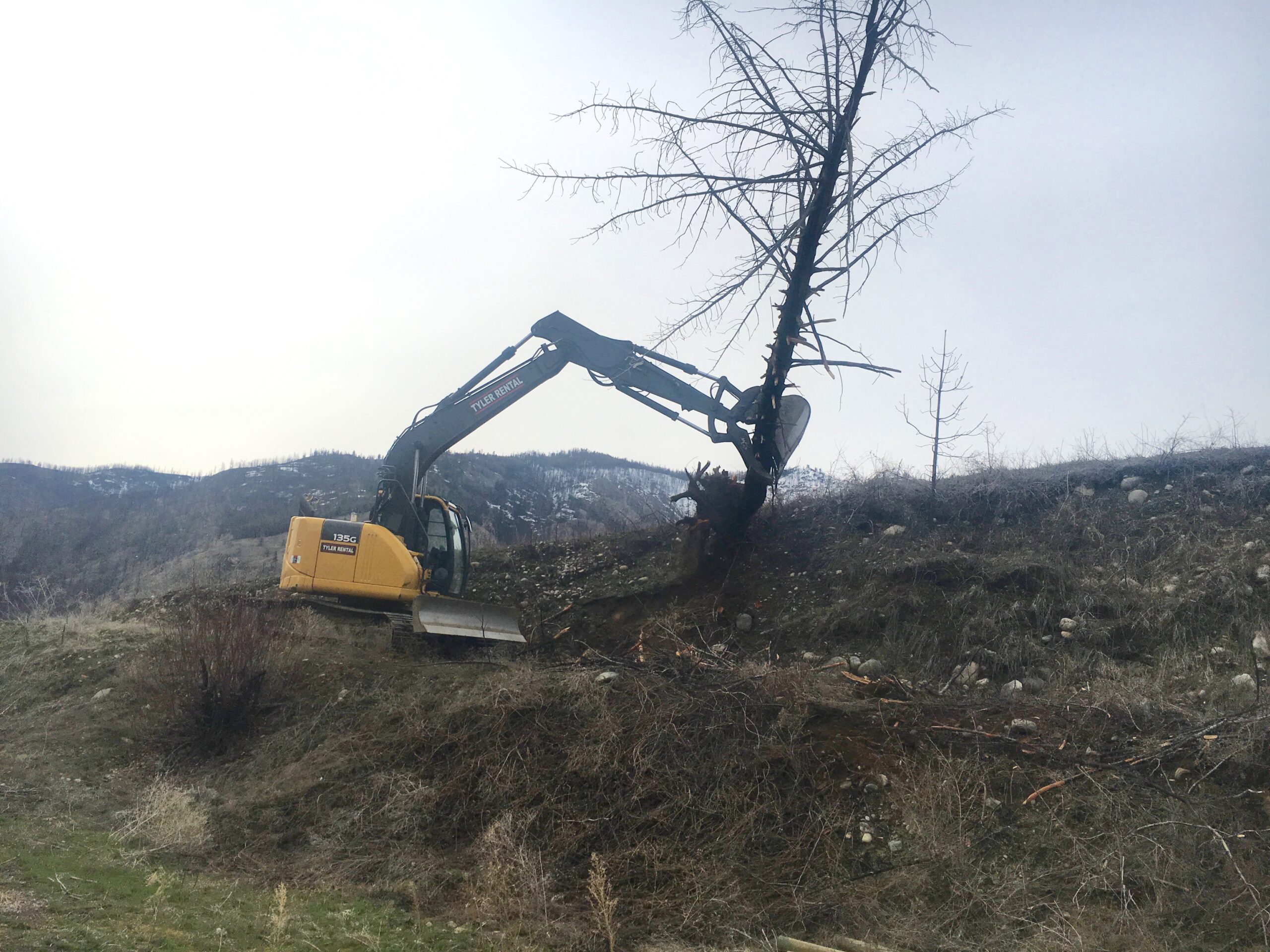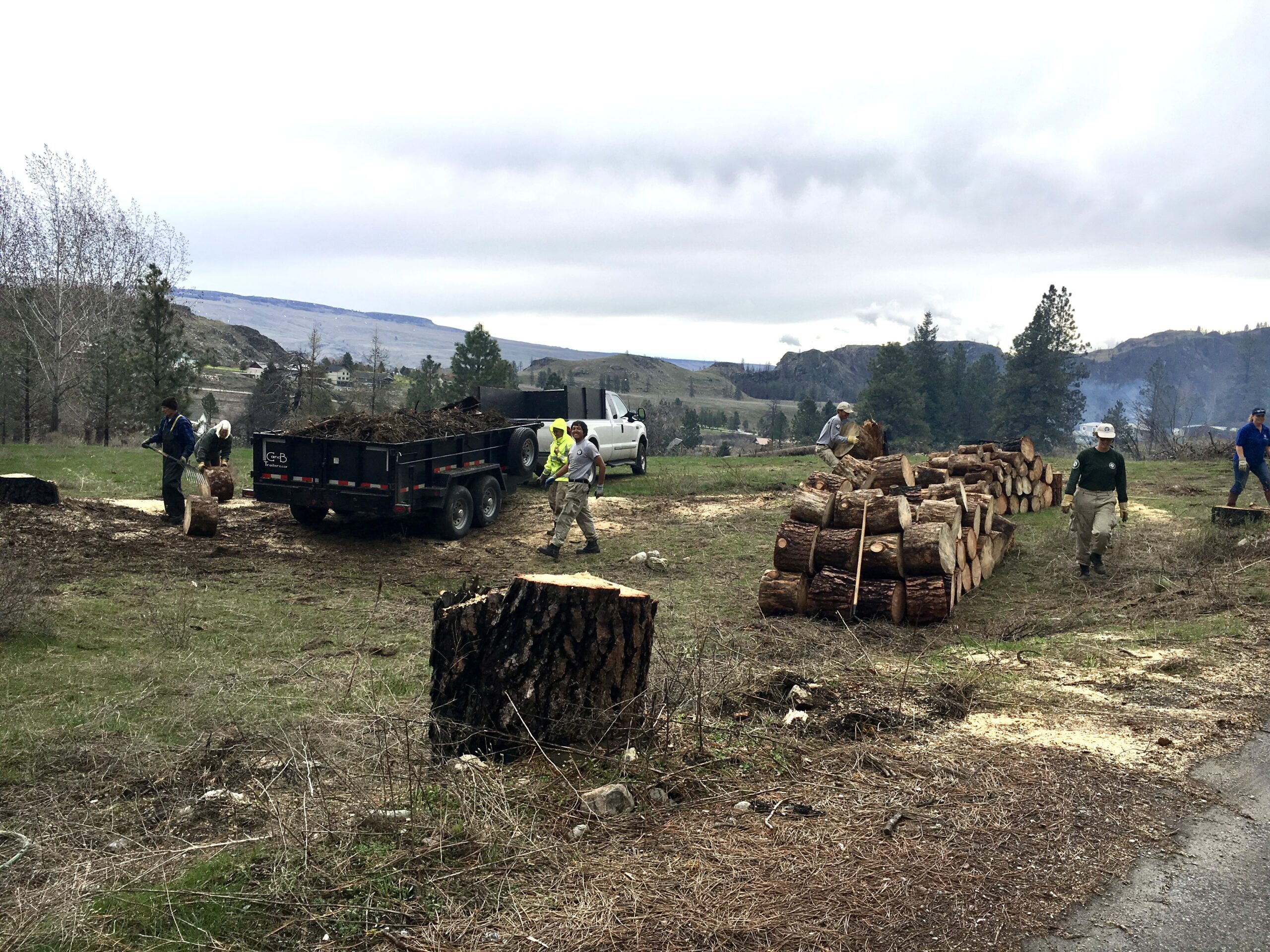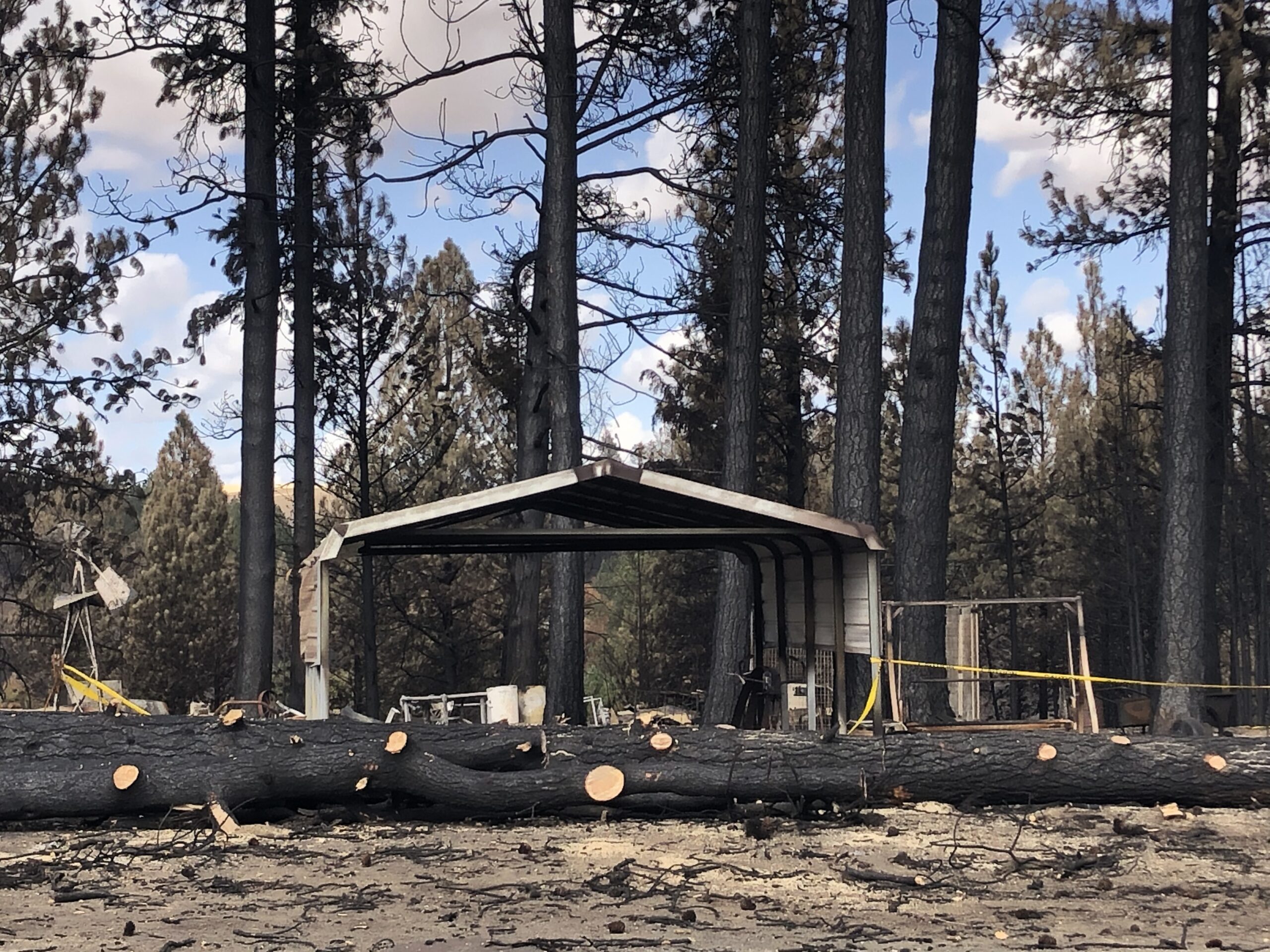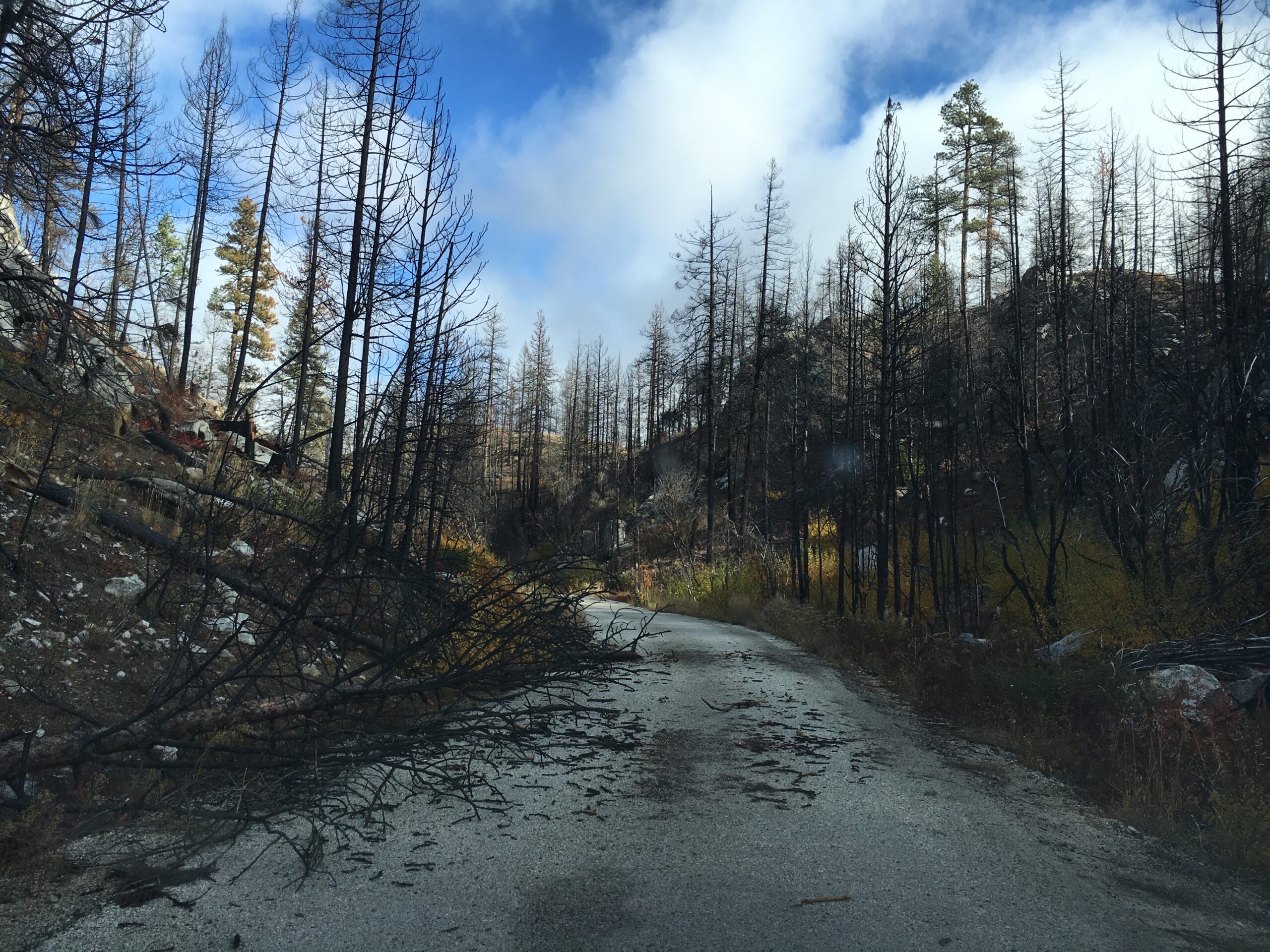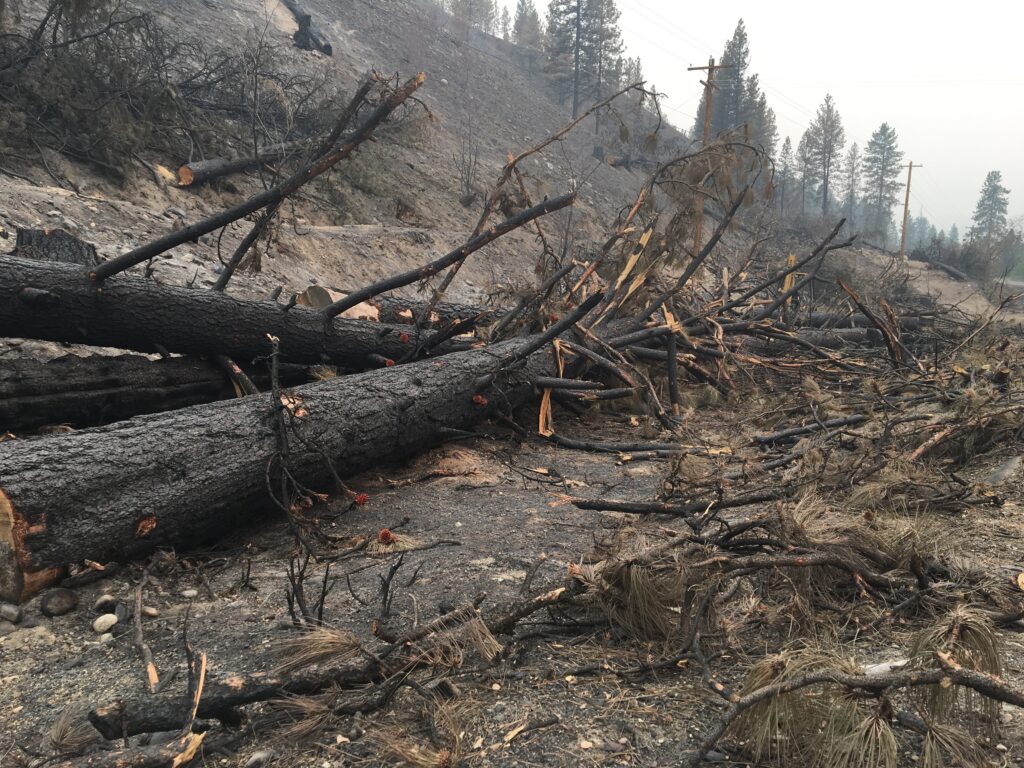There is extensive, valuable printed and online material available for the process and safety issues around hazardous tree removal. However, there are other considerations to look at as well. The unique coordination and innovative thinking during the aftermath of the Carlton Complex Firestorm of 2014 is worth sharing. With over a quarter of a million acres burned in the Carlton Complex, massive tree stands were devastated. Trees close to homes, fence lines, infrastructure and roads had to be addressed. Organizations who assisted in disaster recovery rallied to provide experienced chainsaw teams, including Team Rubicon and UMCOR (United Methodist Committee on Relief). Additionally, experienced local foresters and firefighters responded by volunteering their tree falling expertise. It was all coordinated through the local LTRG (Long Term Recovery Group), resulting in thousands of dangerous and nuisance trees being removed. Also, collaboration with US Dept. of Fish and Wildlife resulted in the limbs and debris from fallen trees being placed in piles on public lands as habit for birds and other animals that lost their habitat during the fire. Volunteer teams, like AmeriCorps NCCC, came in to clean up and buck up trees as firewood to share with survivors who needed it the following winter. Many hands, hearts, and heads make the massive job of burned tree removal a reality. Please note, there is considerable danger and liability in falling burned trees so it should be done only with professional consultation and with the utmost safety.
→ Hazard Tree Situational Awareness
→ Dead and Fire Weakened Tree Removal Resource Guide
